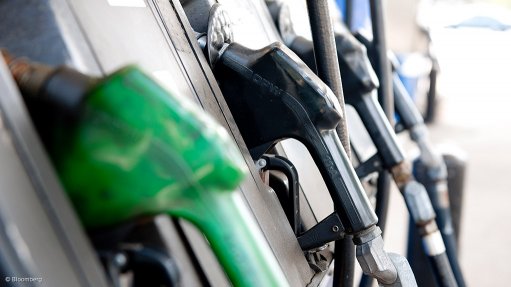
Photo by: Bloomberg
A record spike in the oil price – which jumped 20% at the start of trading on Monday – has probably dashed all hopes of a South African fuel price cut in October.
On Saturday, ten drones struck two Saudi oil facilities – which affected half of that country’s oil output, or 5% of the world’s oil supplies.
A strong rand rally over the past week has put the petrol price on track for a cut in the first week of October. Based on the latest data from the Central Energy Fund (CEF), unleaded 95 octane petrol was due to be lowered by almost 11c a litre, while 93 octane petrol could be cut by 24c.
But Automobile Association (AA) spokesperson Layton Beard says the massive increase in the global oil price will cancel out the forecast price cut.
The AA was due to publish its mid-month forecast for October prices on Monday, but will now postpone its announcement until it has a clearer picture of oil price movements.
The Brent oil price saw a record spike on Monday morning – with an initial surge of almost 20% to above $71 a barrel within minutes of markets opening.
By 10:00 on Monday morning, Brent was almost 9% higher at around $65. And after almost breaking through R14.50/$ last week, the rand has also weakened to R14.64/$ as markets react to the attack.
The drone attack is the single worst sudden disruption ever in the world oil market – bigger than the loss of production from Kuwait and Iraq after the latter’s invasion of Kuwait, and also larger than the outage due to the Islamic Revolution in Iran in 1979.
Saudi Arabia is currently trying to restore production, but the political tensions triggered by the attack could have a lasting impact on the global oil market, as tensions between the US and Iran escalate.
The Houthi rebel group in Yemen has claimed responsibility for the attack, and according to a Business Insider report, the rebels have access to so-called “suicide or kamikaze drones”, include UAV-X drones with a maximum range of 1 500 kilometers, which would give them the ability to launch drones from Yemen to Saudi Arabia.
But the US is blaming Iran – which has denied involvement.
On Monday morning, the BBC reported that the US government issued satellite images to back its claim that Iran was behind the attacks.
The markets are fearing military conflict between the US and Iran, with Al Jazeera reporting that Iran’s elite military force, the Revolutionary Guard Corps, said it was prepared for a "full-scale war".
“In a not-so-subtle threat, the commander of the Islamic Revolutionary Guard Corps' aerospace arm noted Iran's missiles could hit US bases and ships within a range of 2 000km,” Al Jazeera reported.
Petrol prices have increased by almost 15% this year, from R14.01 for 95 unleaded in January, to R16.03 in September.